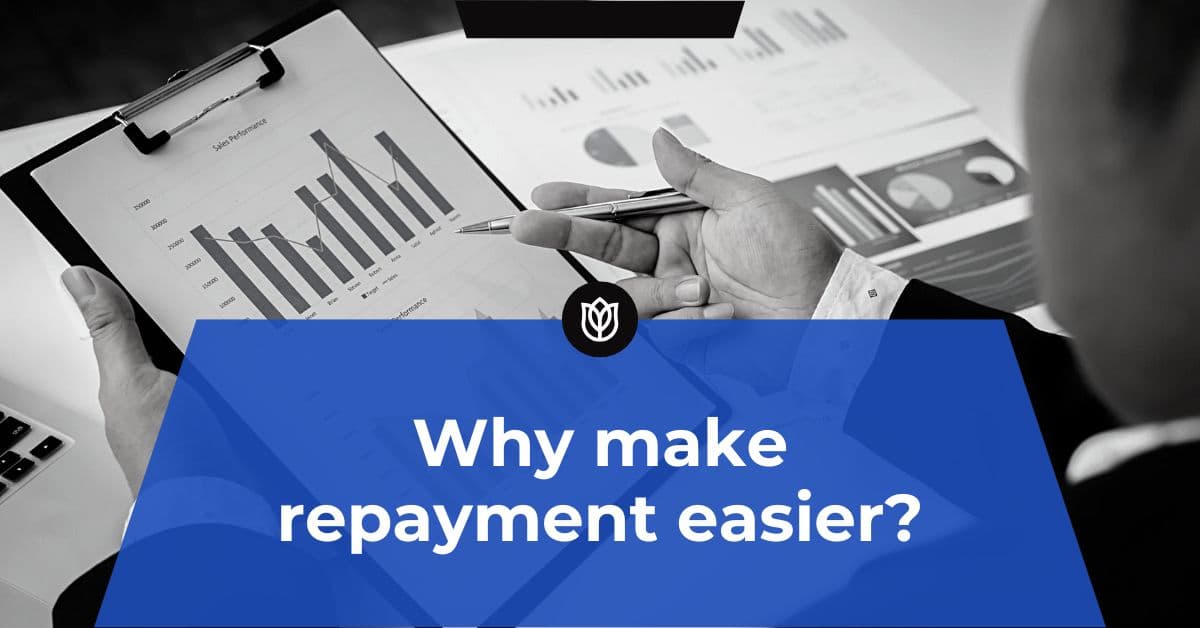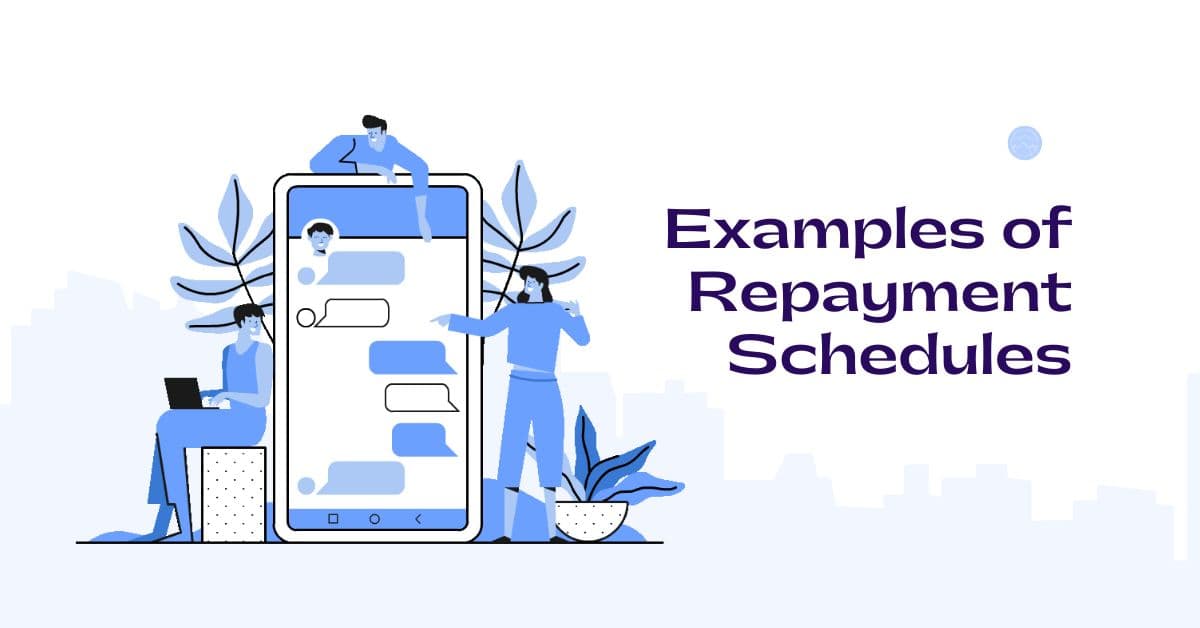Loan Repayment Made Easy: Loans are a lifeline for millions of Indians, whether it’s a housing loan to purchase a property in Mumbai, a personal loan to attend a wedding in Delhi, or a vehicle loan to get through Bangalore traffic. According to RBI forecasts, there would be over 100 million retail borrowers in India by 2025, with ₹90 lakh billion in outstanding credit. Borrowing is a major part of our financial system. However, with EMIs (Equated Monthly Instalments) eating into earnings, high interest rates adding to the burden, and the ongoing balancing act of everyday costs, repaying these loans can appear like a daunting maze. The good news? A detailed, strategic money blueprint that is adapted to your Indian realities may make loan repayment simple.
Whether your monthly income is ₹30,000 in a Tier-2 city like Lucknow, ₹50,000 in a busy metropolis like Pune, or ₹1 lakh in Chennai, These suggestions can help you pay off loans more quickly, save money on interest, and regain financial independence. They include prioritising high-interest debts, leveraging bonuses, and creating a repayment schedule that works for you. Let’s start today by creating a financial blueprint that will make loan repayment simple!
How to Make Loan Repayment Easier and Why It Feels Difficult
There are particular difficulties with loans in India. ₹7.14 lakh to ₹2.14 lakh in interest alone is the result of ₹11,900 EMIs on a ₹5 lakh personal loan with 14% interest spread over 5 years. You will spend ₹41.76 lakh in total if you include a ₹20 lakh house loan at an interest rate of 8.5% for 20 years, or ₹17,400 EMIs. These EMIs (₹29,300) consume 58% of a ₹50,000 salary earner’s income, leaving little left over for savings, food, or rent. It is more difficult because to rising inflation (5–6% in 2025), unforeseen expenses (a ₹10,000 medical bill), and cultural influences (such as holiday spending).
Why make repayment easier?

- Saves Money: You may save money in your pocket by reducing interest (for example, ₹50,000 on a ₹5 lakh loan).
- Credit Boosting: On-time payments raise your CIBIL score to 750+, which opens up more favourable lending options.
- Lessens Stress: The EMI load is lessened with a well-defined plan.
- Releases You Quickly: Start saving sooner and pay off in three years rather than five.
- Creates Wealth: Investments (like SIPs) are financed by post-loan income.
With India’s digital economy growing rapidly—UPI will handle 14.4 billion transactions in February 2025—you have access to technologies and methods that will make repayment easier. To help you make it happen, here is your money map.
Easy Loan Repayment: Your Comprehensive Money Map
Are you prepared to take control of your loans? This comprehensive money map provides 12 shrewd, useful suggestions for Indian debtors, along with actions, hacks, and examples to speed up payback.

Step 1: Provide a detailed list of all your loans
- How to Proceed: Note the amount, interest rate, EMI, term, and remaining balance of each loan (for example, ₹5 lakh personal loan, 14%, ₹11,900 EMI, 3 years remaining).
- Why It Is Important: Power comes from clarity. Understanding your starting place is demonstrated by your entire EMI (for example, ₹20,000 on an income of ₹50,000).
- Deep Dive: Include penalties for missing payments, which may be avoided with preparation, or late fees (₹500).
- For instance, Ravi’s ₹15,000 house loan plus ₹5,000 auto loan equals ₹20,000 on an income of ₹60,000.
- Take action: Gather loan information using an Excel spreadsheet or notepad by April 10, 2025.
Step 2: Give High-Interest Loans Priority
- How to Proceed: Prioritise the most expensive debts (for example, 14% personal vs 8% residential).
- The Reason It Works: Over five years, a ₹5 lakh loan at 14% will cost ₹2.14 lakh in interest, compared to ₹1.62 lakh at 8%—a savings of ₹52,000.
- Tricks: Pay more on high-interest loans (a lump amount of ₹5,000 reduces interest).
- For instance, Anita saved ₹15,000 in interest by paying an additional ₹10,000 on a 15% loan.
- By April 15, 2025, take action by ranking loans by interest rate and aiming for the top loan.
Step 3: Use the 50-20-20-10 Rule when creating a budget
How to Proceed: Salary split after taxes (for example, ₹48,000 on ₹50,000):
- 50% of needs (rent, food, and expenses) are ₹24,000.
- 20% EMIs on loans totalling ₹9,600.
- 20% Prepayment/Savings: ₹9,600 (emergency, further payments).
- 10% of people want ₹4,800 (fun).
Why It Is Important keeps: EMIs between 20 and 30 percent—15,000 on 50,000—and modifies “wants” to 5% (₹2,400).
For instance, Sanjay’s ₹12,000 EMI covers his ₹60,000 pay cheque, saving him ₹12.
Take action by April 20, 2025, to draft your budget and test it for 30 days.
Step 4: Make EMI payments automatically
- How to Proceed: On salary day (such as the first or fifth), set up auto-debits.
- The Reason It Works: Avoids CIBIL decreases (20 points) and late fines (₹500)—₹15,000 EMI on ₹50,000 leaving ₹35,000.
- Deep Dive: Banks like SBI and HDFC provide this for free; ECS or UPI requirements guarantee consistency.
- For instance, Priya never missed a payment on her ₹10,000 EMI auto-debits.
- Take action: Verify with your bank that auto-debit is enabled by April 25, 2025.
Step 5: Use Windfalls to Prepay
- How to Proceed: Reduce principal by using gifts, tax refunds, or incentives (such as a ₹20,000 Diwali bonus).
- Why It Is Important: On a ₹5 lakh loan at 12% (5 years), a ₹50,000 prepayment reduces duration and saves ₹37,500 in interest.
- Tips: Look for high-interest loans first, and be sure to check for prepayment penalties (1-2%).
- For instance, Ravi’s EMI of ₹30,000—₹10,000 decreased to ₹8,000.
- Take action: By December 2025, arrange a ₹10,000 down payment.
Step 6: Get a Better Rate by Refinancing
- How to Proceed: Change to a less expensive loan (for example, 14% to 11% through NBFCs like Bajaj Finance).
- The Reason It Works: ₹5 lakh at 14% (5 years) saves ₹49,000 in interest compared to ₹1.65 lakh at 11%.
- In-depth: Secured loans (gold, 9%) are preferable to unsecured ones; a high CIBIL score (700+) is helpful.
- For instance, Anita saved ₹20,000 by refinancing ₹3 lakh at 12%.
- Take action: Apply to one lender and compare rates on Paisabazaar by April 30, 2025.
Step 7: Reduce Everyday Costs
- How to Proceed: Save between 2,000 and 5,000 on utilities, food, and transportation.
- Why It Is Important: Quickly, ₹35,000 after EMI on ₹50,000 becomes ₹1,000 saved, which is equal to ₹1,000 paid in advance.
- Hacks: LED lights (₹200 off), buses (₹500 vs. ₹2,000 automobiles), and cooks (₹50 vs. ₹150/meal).
- Sanjay, for instance, reduced loan payments by ₹3,000 to ₹36,000 year.
- By May 05, 2025, identify ₹1,000 reduction.
Step 8: Create an Emergency Fund
- How to Proceed: Save EMIs for three to six months (for example, ₹45,000 for ₹15,000 EMI).
- The Reason It Works: prevents EMI defaults in the case of an emergency or job loss—a medical cost of ₹20,000 is covered.
- How: 6-7 percent in a liquid fund, between ₹1,000 and ₹2,000 every month.
- For instance, Priya saved ₹24,000—EMI-safe for two months—with ₹2,000 every month.
- Take action by May 10, 2025, to begin the ₹1,000 buffer.
Step 9: Increase your income with side gigs
- How to Proceed: Make between ₹2,000 and ₹5,000 per month by selling crafts, coaching, and freelancing.
- Why It Is Important: With extra money, repayment is accelerated—a loan of ₹5 lakh that is repaid in one year at ₹3,000 per month.
- Hacks: Upwork (₹3,000), cooking (₹2,000 profit), and online teaching (₹1,000).
- For instance, Anil’s ₹3,000 per month teaching paid off a ₹1 lakh debt in three years.
- Take action: By May 15, 2025, begin a gig.
Step 10: Engage in Lender Negotiations
- How to Proceed: Request tenure extensions or reduced rates (e.g., 5 to 7 years, 12% to 10%).
- The Reason It Works: ₹5 lakh at 12% (5 years) saves ₹43,000; the longer the period, the lower the EMI.
- Deep Dive: Use a solid payment history to your advantage; banks like ICICI could give in.
- For instance, Sanjay saved ₹15,000 when his debt from 14% decreased to 12%.
- Take action by giving your lender a call by May 20, 2025.
Step 11: Combine Several Loans
- How to Proceed: Combine loans into a single payment (for example, ₹3 lakh + ₹2 lakh at 12% instead of 14% each).
- Why It Is Important: One EMI reduces interest and streamlines financial flow (₹11,900 vs. ₹13,500 total).
- Hacks: include transferring funds through NBFCs like Tata Capital and Axis Bank.
- For instance, Anita’s ₹15,000 in EMIs were reduced to ₹12,000, saving her ₹36,000 year.
- Take action by May 25, 2025, to investigate consolidation.
Step 12: Track Progress and Celebrate
- What to Do: Review loans every year to ensure balance and interest savings, and recognise accomplishments with a ₹500 treat.
- The Reason It Works: It inspires ₹5 lakh to ₹4 lakh in two years to see ₹1 lakh paid off.
- Hacks: Celebrate little victories (₹50,000 prepaid), and use apps (ClearTax, Walnut).
- For instance, Ravi spent ₹2 lakh and celebrated with a family meal.
- Take action by May 30, 2025, to schedule a 2026 review.
Examples of Repayment Schedules

₹10,000, ₹30,000 in salary EMI Income (after taxes): ₹29,000.
- EMIs for the personal loan: ₹10,000.
- ₹14,500 is needed for rent, food, and bills.
- Prepayment/savings: ₹2,500.
- Desires: ₹2,000.
- Bonus: ₹1,000 each month in advance—loan shortened by one year.
- ₹15,000, ₹50,000 in salary EMI Income (after taxes): ₹48,000.
EMIs for the house loan: ₹15,000.
- ₹24,000 is needed.
- Prepayment/savings: ₹6,000.
- Desires: ₹3,000.
- Extra: Save ₹50,000 on interest by prepaying ₹2,000 every month.
Advantages of Simple Loan Repayment
- Interest savings: throughout the course of the loan: ₹50,000 to ₹2 lakh.
- Credit Boost: Future loans will be less expensive when CIBIL increases from 700 to 800.
- Debt Freedom: Pay off loans in three years as opposed to five.
- Building Wealth: SIPs funded by post-loan income (5 lakh over ten years).
- Peace: Financial tranquility—no EMI concern.
Examples from Real Life:
Aliya’s Personal Loan Win
Aliya, a Delhi-based 30-year-old teacher who makes ₹50,000 a month:
- EMI: ₹12,000 (14 percent of the personal loan).
- Prepaid: ₹25,000 in interest savings, plus ₹20,000.
- In three years as opposed to five.
- She claims that her money plan was successful.
Anil’s Approach to Home Loans
Anil, a Delhi-based 40-year-old clerk who makes ₹60,000 per month:
- EMI: ₹20,000 (8.5% house loan).
- saved ₹1 lakh by refinancing to 7.5 percent.
- Extra ₹3,000 a month—10 years remaining instead of 15.
- “Now it’s easy to repay,” Anil says.
Sunita’s Success with Auto Loans
Pune manager Sunita, 35, makes ₹40,000 a month:
- EMI: ₹8,000 (12%) for the automobile loan.
- Monthly side gig: ₹2,000—paid up in two years.
- Interest of ₹30,000 was saved.
- “I have no debt,” she says.
Additional Advice for Indians on Loan Repayment
- Festive Boost: Prepay with ₹5,000 in Diwali cash to avoid paying ₹10,000 in interest.
- Tax Refunds: a ₹20,000 ITR reimbursement for loans with a shortened duration.
- Digital Tools: ClearTax (tracking) and Paisabazaar (rates).
- Negotiate Fees: Forego ₹2,000 in refinancing processing fees.
- Wishfin offers a free CIBIL check; aim for 750+.
- Family Plan: Sync with your spouse for an additional ₹5,000 per month.
- Learn: Look for advice on YouTube (e.g., CA Rachana Ranade).
Typical Problems and Their Solutions
- Problems: High EMI load (more than 50% of earnings) is a challenge.
Solution: Reduce ₹2,000 per month by refinancing and extending the duration. - Problem: No more funds.
Solution: Reduce “wants” by ₹1,000 and make a little upfront payment. - Problem: Payments are disrupted by emergencies.
Solution: Build a ₹30,000 buffer—three months’ worth of EMIs—as a solution. - Problem: Confusion from several loans is the challenge.
Solution: Consolidate—₹15,000 to ₹12,000 EMI is the solution. - Problem: Fear of prepayment fines is the challenge.
Solution: Verify the terms; most personal loans don’t have penalties.
Why This Money Map Works in India
With ₹90 lakh crore in loans (2025 RBI figures), India has a sizable lending market. It’s made simpler by your money map:
- Digital Edge: Tracking and payments are made easier by UPI and apps.
- Economic Need: Savings are required due to rising expenses (₹5,000 for food).
- Cultural Fit: Strikes a balance between family, holidays, and loans.
Resources and Tools
- Apps: ClearTax (tax), Groww (savings), and PhonePe (payments).
- Websites: Moneycontrol (advice) and RBI (lender information).
- Freebies include YouTube instructional and EMI calculators from BankBazaar.
- Communities: For peer guidance, visit r/IndiaInvestments.
Begin Your Money Map Today
Now take control of your loans:
- Debts must be listed before April 5, 2025.
- Budget by April 20, 2025, using EMIs.
- By April 30, 2025, pay ₹5,000 in advance.
This money map has the power to govern you, not loans. To spread the independence, share with debt-ridden friends or relatives. Every Indian may master repayment by following these methods!
Refinancing Hacks for Low CIBIL Scores: Unlock Better Loan Terms
How to Use CRED for Credit Card Debt Management in India
How to Reduce Credit Card Debt in India Fast: A Step-by-Step Guide
